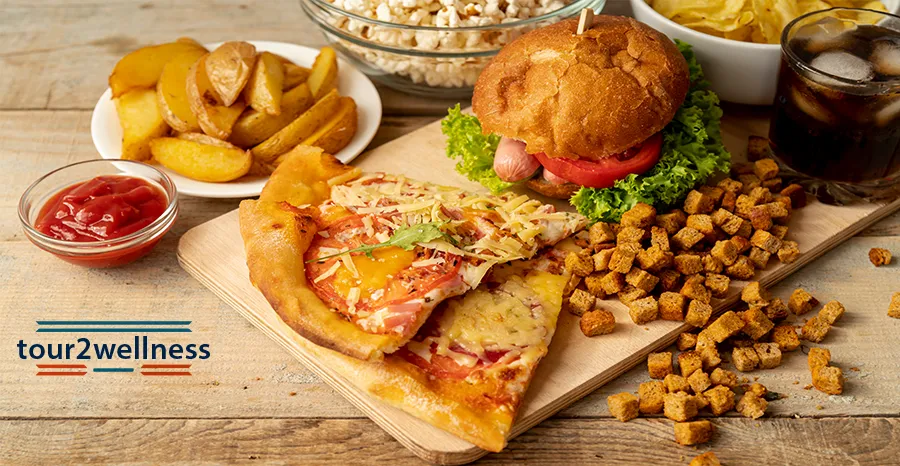
There is a strong association between processed and ultra-processed foods with obesity, hypertension, and diabetes. What do these foods actually entail at the moment? Do they really cause harm?
What Are Processed Foods?
According to the Department of Agriculture, processed foods are raw agricultural products that have been modified from their original state. This modification can involve washing, cleaning, milling, cutting, chopping, heating, pasteurizing, blanching, cooking, canning, freezing, drying, dehydrating, mixing, or packaging.When foods are altered to include preservatives, flavorings, other food additives, or substances like salt, sugars, and fats to enhance flavor and extend shelf life, they move into the ultra-processed category.
Classification of Processed Foods
The Academy of Nutrition and Dietetics categorizes processed foods into various
levels:
⦁ Minimally Processed Foods:
Items like fresh blueberries, cut vegetables, and roasted nuts, prepared for
convenience.
⦁ Foods Processed for Nutritional Quality: Canned tomatoes, tuna, and frozen fruits or vegetables, preserved at their peak for quality and freshness.
⦁ Foods with Added Ingredients:
Products such as jarred pasta sauce, salad dressings, yogurt, and cake mixes that include
sweeteners, spices, oils, colors, and preservatives for flavor and texture.
⦁ Ready-to-Eat Foods:
More heavily processed items like crackers, chips, and deli meats.
⦁ Ultra-Processed Foods:
Highly processed foods like sweetened breakfast cereals, soda, energy drinks, artificially
flavored snacks, chicken nuggets, and hot dogs.
Minimally Processed Foods in a Healthy Diet
Minimally processed foods can be part of a healthy diet. For instance, low-fat milk, whole-grain or wheat bread, precut vegetables, and fresh-cut greens are considered processed foods. Dairy and plant-based milks and juices may be fortified with vitamins, while breakfast cereals can have added fiber. Canned fruits packed in water or natural juice are also good alternatives when fresh fruit is unavailable.
Reading Food Labels
To make healthier food choices, examine ingredient lists and nutrition facts labels:⦁ Avoid foods with additives and preservatives like high fructose corn syrup, hydrogenated oils, food dyes, monosodium glutamate, sodium nitrates, sodium nitrites, and sulfites.
⦁ Reduce consumption of ultra-processed foods and opt for more unprocessed or minimally processed options.
⦁ Look for natural ingredients.
⦁ Watch for hidden sugars, fats, and salt added during processing.
Most labels now indicate added sugars. The Dietary Guidelines for Americans recommend that individuals over the age of 2 consume less than 10% of their total calories from added sugars, roughly 200 calories in a 2,000-calorie diet. Children under 2 should avoid added sugars entirely. Learn to identify added sugars like maltose, brown sugar, corn syrup, honey, and fruit juice concentrate.
For sodium intake, adults should consume less than 2,300 milligrams per day. Opt for low- or reduced-sodium foods and rinse canned vegetables to reduce salt content.
When checking fat content, avoid trans fats and choose foods lower in saturated fats. Trans fats are particularly harmful as they can raise LDL ("bad") cholesterol and lower HDL ("good") cholesterol.